| Travel / Travel Journal |
Trip to some sacred places in Romania
VERONICA CONSTANTINESCU
The first half of 2006 year was a hard one for me. As though I was waking after a long nightmare, I was trying to recover at least a part of my lost vital force. Various trips were waiting for me to choose one of them for the summer vacation, but it seems that there isn’t anyone I couldn’t bear. Although… it might be one…“The romanian sub-carpathian zone with dacian fortresses and holy monasteries”.
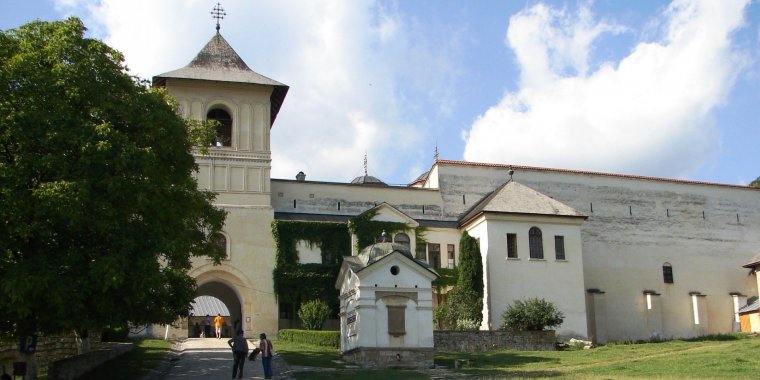
Hurezi Monastery
Naturally, the meeting and starting point on this religious circuit was a local church. Later, on our bus places, as a regular morning ritual before any movement we’ve made in all these five days on the road, a pray joined all the hearts from within in one single soul.
At about 250 km from home, we have a break for lunch in Sibiu. The center of the city is in full preparation for the second day of “ArtMania Festival”.
Leaving behind us the Cetatii Street with its city wall and the three towers (vestiges of the medieval fortress), we are straightening to Orastie.
A great personality of ancient times is waiting for us in the heart of the city. Here, near the metropolitan church, the statue of Burebista, the king of the greatest Dacian state, stands as a symbol of our Geto-Dacians ancestors’ virtues.
Proud to be the followers of such men which even Herodot called “the most righteous and the most courageous from the thracs”, we are going forward, to the places where formerly their big system of fortifications was.
From the Costesti camp, where we’ll stay for two nights, we follow the forest line towards the first construction of this type, Blidaru citadel. The roots of the tree seem to help today visitors in having a more easier ascent to their destination.
Once again, nature helps people in finding their own roots. In less than an hour, we reach to it. The fortress was intended to have only a military purpose. Through this altitude, 705 meters, the sight may cover all around. Somehow, naturally, I feel like a sentinel in peace period. I’m in present and also in the past at the same time…
With this feeling, evening finds me watching, near the camp, the gate in with two such warriors are represented.
Early in the morning, we are again on the road. A woman from group has discovered her passion for ancient history in a similar trip that she has made one year ago, and now shares with us her knowledges. It seems that not many people have access to this sacred history area, but lot of those who came once, we’ll come back, called by the power of the places.
In addition, being here just right now, it seems that we are through the privileged few: “This year is a special one in the matter of ancestors – 1900 years from the death of the great Decebal”.
The spirituality of this man, who prefered death instead of surrending in order to preserve the inner heritage of his people, overpowered even his enemy, Traian, who couldn’t enjoy only with his material victory.
With this model of courage and wisdom in front of us, we stopped the bus at Gradistea Muncelului. The huge complex of dacian fortifications from the Sureanu Mountains was developed in the aim of protection of the big settlement from Sarmizegetusa, surrounding in this way the capital.
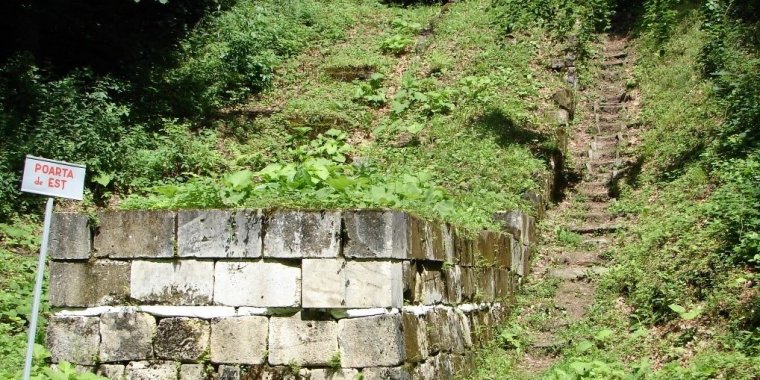
Sarmizegetusa Regia, Eastern Gate
Sarmizegetusa, the core of the system and the main seat of kings, is our main objective today.
We will go there on foot, looking at the beauty and the wild of the area. Thinking how hard could be for the roman invaders to find the way and reach to the capital, we can even imagine how many braves dacians have lost their lives in the battles. The trees on the road are quiet now, but the presence of the natives is still there. The murmur of a stream accompanies us up to the hill, at 1200 m. Through the western gate, we enter…
Walls, steps, eastern gate, paved road, and then… the sacred area. The big number of sanctuars, circular and rectangular, is a reason for sustaining the idea that the region could be one of the posible locations for Kogaionon, the holy mountain, the spiritual center of Dacia.
On the solar disc, we are grouping together in order to honour the memory of the ancestors. “The andesit sun”, where we are staying, is a circular altar with a solar calendar role too.
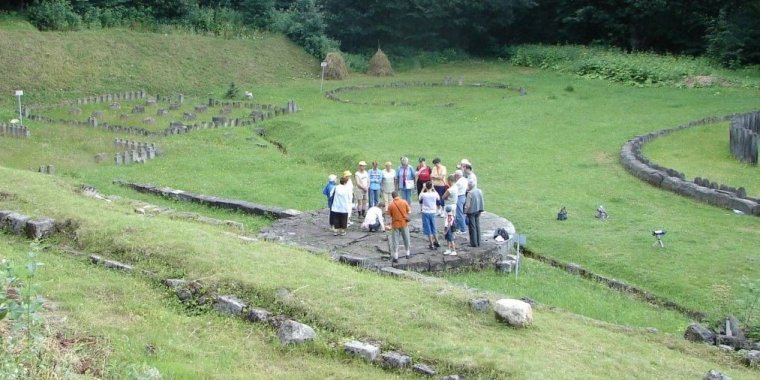
Sarmizegetusa, sacred area, the andesit sun
After a couple of minutes, we are approaching to see the other ruins.
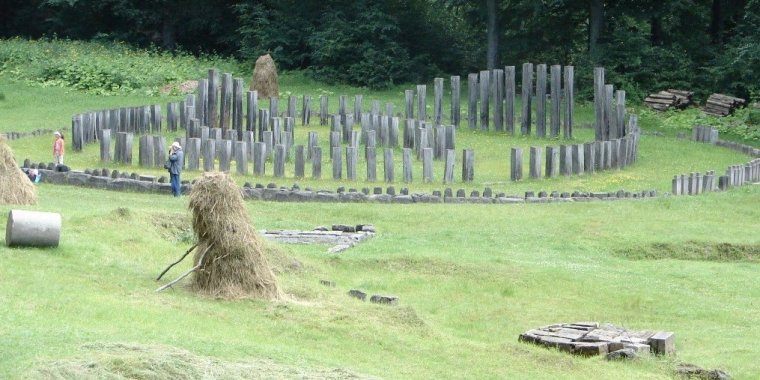
Sarmizegetusa, the big circulary sanctuar
Unfortunatelly, the time we stay is not enough for me to capture all the evidences of the civil, economic and social development that Dacia had reached at that times. As a next step for my initiation, I bought a book with full description of the site and later, at home, I’ll begin to discover the full power of the archeological sites.
On the left side of Gradistea River, on top of the “Cetatuie” Hill, there is another fortress: Costesti. We are visiting it in the evening, looking at the sanctuaries and water storage cisterns, taking photos from the dwelling towers…
With a cup of fresh milk bought from the local peasants, we remain one more hour on the green grass from the valley, filling our hearts with the peace/serenity of the places.
Next morning, at Hunedoara, another history page reveals in front of us. A huge castle seems to be the master of the city.
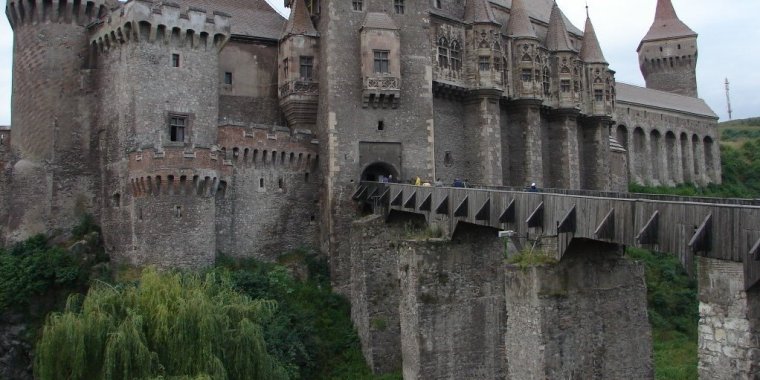
The Hunyadi Castle
Through the first owners of the castle, Iancu of Hunedoara (Johannes de Hunyad) has played an important role in the political and military life of the 15th century Europe. Governor of Transylvania, elected later Governor of Hungary, he lead many battles, the major one being those against the Sultan Muhammad the 2nd, at Belgrad. For two decades he stopped the turkish offensive to the Western Europe.
Through its army room, the torture room and the well diged by three turkish prisoners, the Hunyad Castle is still wearing the prints of that period.
Same county, 13 km from Hateg, we stopped to the Prislop Monastery. Convent for nuns founded in the 14th century by pious Nicodim, it has two dedication days: “The Holy Evangelist Ioan” and “The Cross Day”.
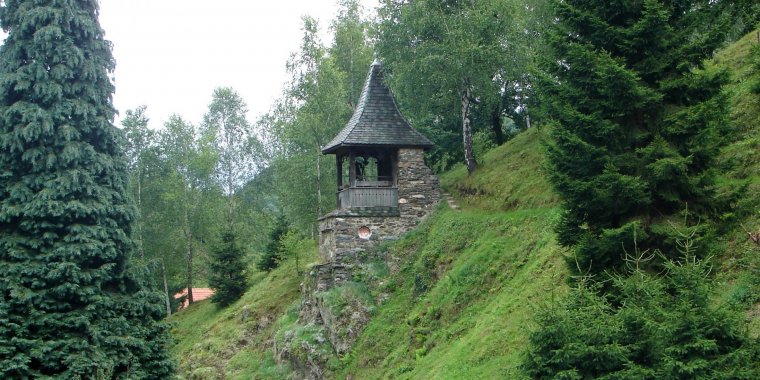
At Prislop Monastery
In sign of profound respect, the graves of nuns, especially of the priest Arsenie Boca, are full covered with flowers and floral arrangements.
Since our itinerary is based on the optimal route, we are turning now again in time. Densus……certainly one of the oldest churches from Romania, maybe the first one ever known on Dacia territory.
One supposition is that the Church was raised by the Goths in 4th – 6th century A.D., another stipulates that it might have been a roman temple dedicated to Mars god. However, on its construction (or reconstruction in 13th century) were used tiles, columns, and other pieces similar with those from the nearby ruins of the Ulpia Traiana Augusta Sarmizegetusa, the ancient roman city that we are going to visit.
After the Dacia conquer in the 106 year a.c., the romans raised here, in the Hateg Mountains, a fortress with the dacian capital name. Since the native fortresses were distroyed in anterior wars, the roman citadel is preserved better. The vestiges - Gods temples, sanctuaries, amphitheater, forum, glassware workshop, thermae - help the visitors to imagine the customs of those times more easier.
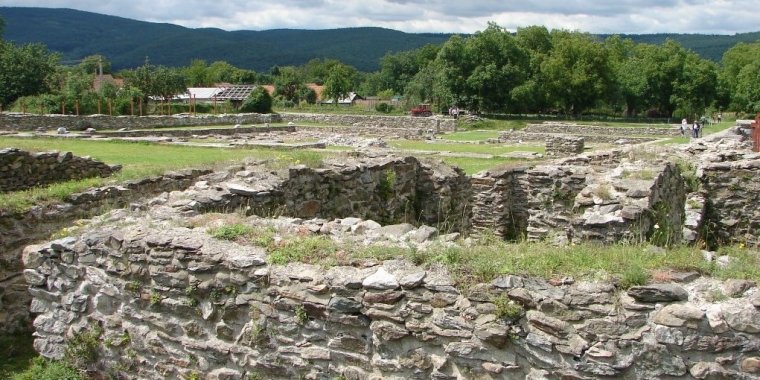
Ulpia Traiana Augusta Sarmizegetusa
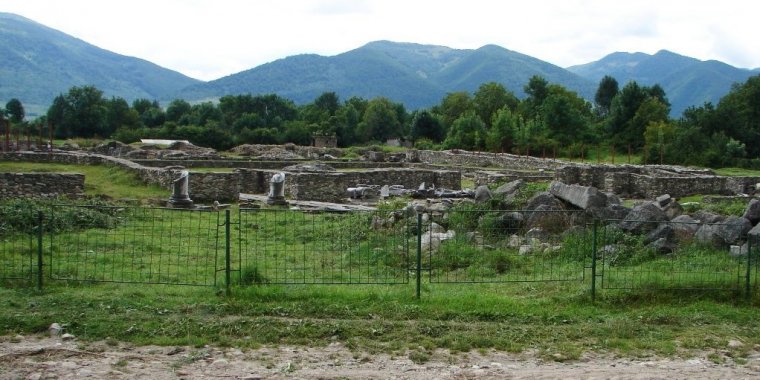
Ulpia Traiana Augusta Sarmizegetusa
In Gorj county, 30 km north from Targu-Jiu, we make a halt on the monks monastery Lainici.
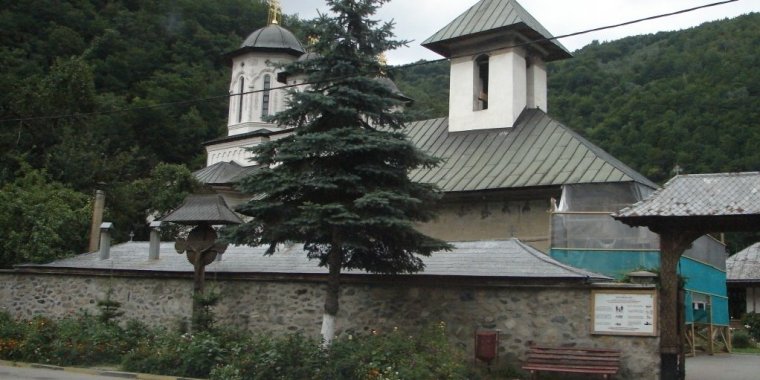
Lainici Monastery
Attested since the 14th century, in 1990 it has got a new look: two superposed churches as the cathedral. It’s founder, Saint Nicodemus of Tismana, is also the one who established Tismana Monastery, our lodging for the third night. This is a nuns monastery, with two workshops, for painting and tailoring. The rooms meet us in cosy atmosphere.
Day 4 has as a main place of interest the Targu Jiu city: the metropolitan church and the Brincusi’s art complex: ”The Gate of Kiss”, “The Table of Silence” and “The Endless Column”, the stools’ alley…
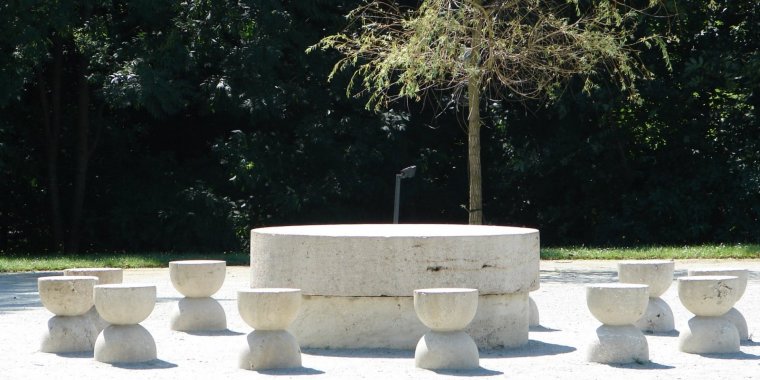
Table of Silence
The ensemble, named “Avenue of the Heroes”, was dedicated in the memory of the Gorj heroes who died in the 1916-1918 war.
One hour after the last pictures taken from here, we arrive at a nuns monastery: Polovragi.
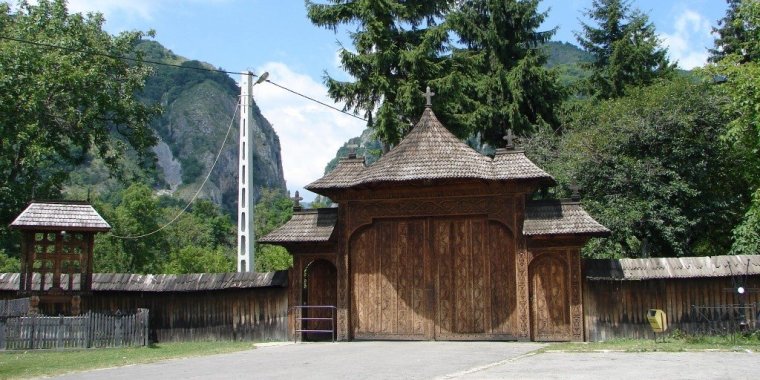
Polovragi Monastery
Through a gate with impressive sculptures, we enter in a mirific place guarded by mountains. The monastery is holding an old books and cult museum.
A cave with the same name and more than 10 km length is in neighbourhood. Stalactites and stalagmites are everywhere inside, assuming different shapes. If Kogaionon, the mountain where Zamolxis, the Dacian’s god, lived, was at Sarmizegetusa, we might say that this is the underground cave where he was dwelling for three years.
In the afternoon, we found the biggest and richest ensemble of romanian brancovean art at Hurezi.
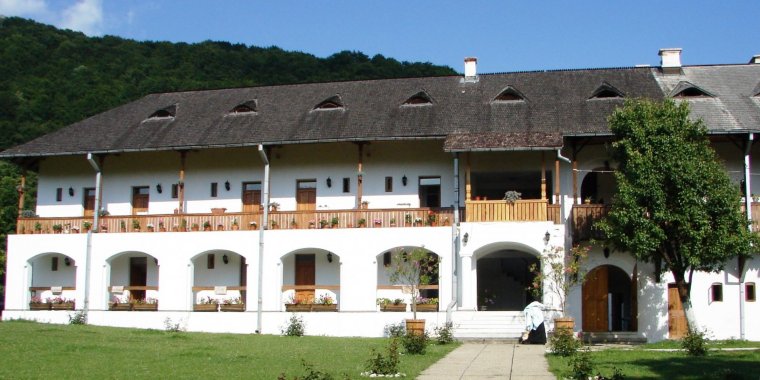
Hurezi Monastery
The monastery was established between the 1690 and 1697 by Constantin Brancoveanu and since then it played an important role in cultural and artistic life. On the church walls are depicted the portrets of the founder and his royal family who never give up to their orthodox religion and therefore were murdered by the Turks.
In Romania, since old times there was a connection between the local governors and the monasteries. Places who protected and guided the firsts when they were in difficulty situation in battles have becamed sacred, many monastery building being raised there later. This is also the case of Arnota, a settlement raised in Capatanii Mountains, at 840 m altitude, by Matei Basarab. Besides his and his father grave, you may find here relics of many saints, such as Saint Maxim The Confessioner, Saint Paraschevi…
From the elevation point, you can have an overview of Bistrita, the nuns‘ monastery where we have the accomodation for the last night. The arhitecture of these two monasteries have Brancusi’s mark too.
About 8 and a half p.m., we go out for a walk in proximity. The sound of the water and the glow worms’ show make the evening more special.
I reserve the midnight to assist to the divine service. The murmur of nuns singing the praise of God is raising like a light in the quietude of mountains. With this sweet echo, the traveler falls asleep, preparing for a new day.
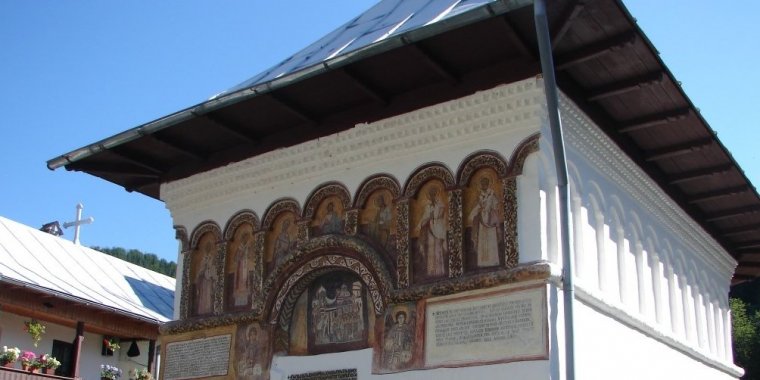
Iezeru Hermitage. Details
When I have arrived at Iezeru, it seems that the place was waiting for me. I didn’t know why I have this feeling till I saw the cave of the Saint Antonie.
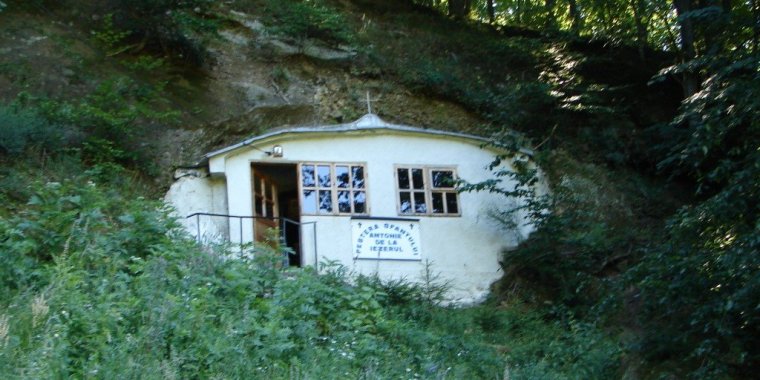
Iezeru, the Saint Antonie cave
At the forest shelter, a cone of light starting as from there is embracing me with warm and brings more peace in my heart. The saint knew I passed through a difficult period and meet me with love, hope and confidence. At departure, when one of the nuns asked me if I’ll be back there, I understood that my presence here at this time was not by pure incidence.
Only a half an hour length from Iezeru is another miracle of God, involving the nature and human creatures. In the hard rocks, the monks established a settlement with "Prophet Elijah" as dedication day. The monastery is having the name of its founder: Pahomie.
Raised between 1387-1389 by Radu I and his sons, Dan I and Mircea the Old, Cotmeana Monastery is the oldest monastery church from Wallachia.
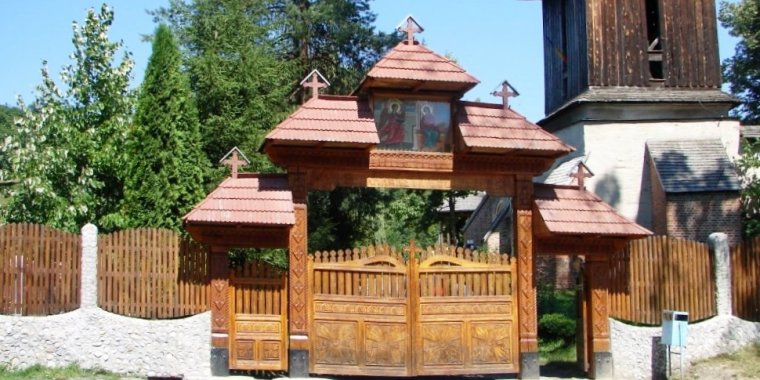
The gate of Cotmeana Monastery
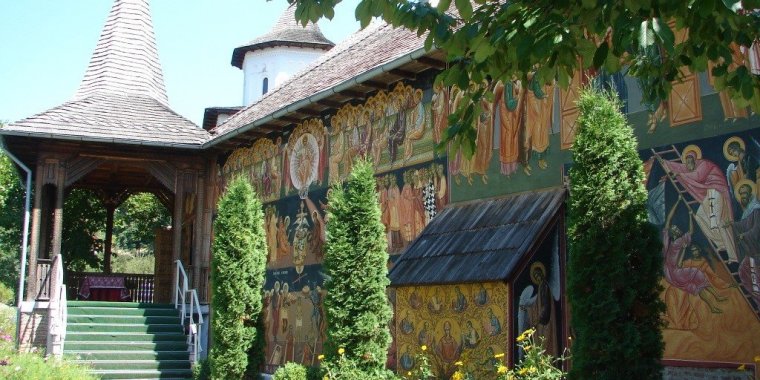
Cotmeana Monastery
We make here only a short visit before going to the last objective of this circuit, the Dealu Monastery.
Here, in Dambovita county, 4 km far from Targoviste, is the place where, in 1598, was signed the aliance against turkish invasion... Many voivodes are entombed in the pronaos of the church. Between them, Vladislav the Second, Patrascu the Good, Mihai Movila. But special tombs, with white marble, were those of Radu the Great and the one with the head of Michael the Brave.
Two monuments were raised there for the last one: a statue with his bust and one with he on his horse and with his army, who support him in achieving, in 1600, the most wanted ideals of romanian: the independence and the unification of all romanian territories.
And thus, worshipping God and this great personality, forerunner of modern times/epoch, came to its end our spiritual journey.
YOU MAY ALSO LIKE





